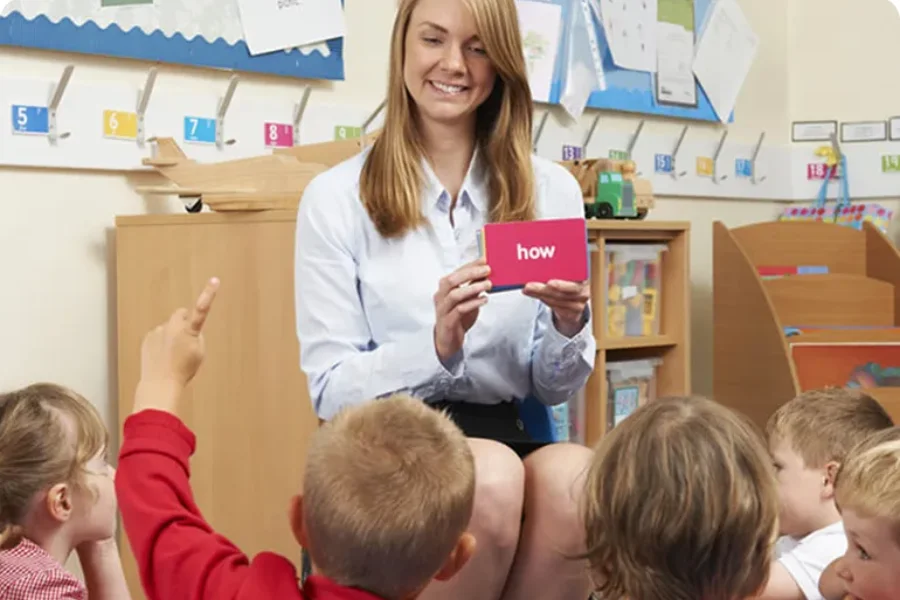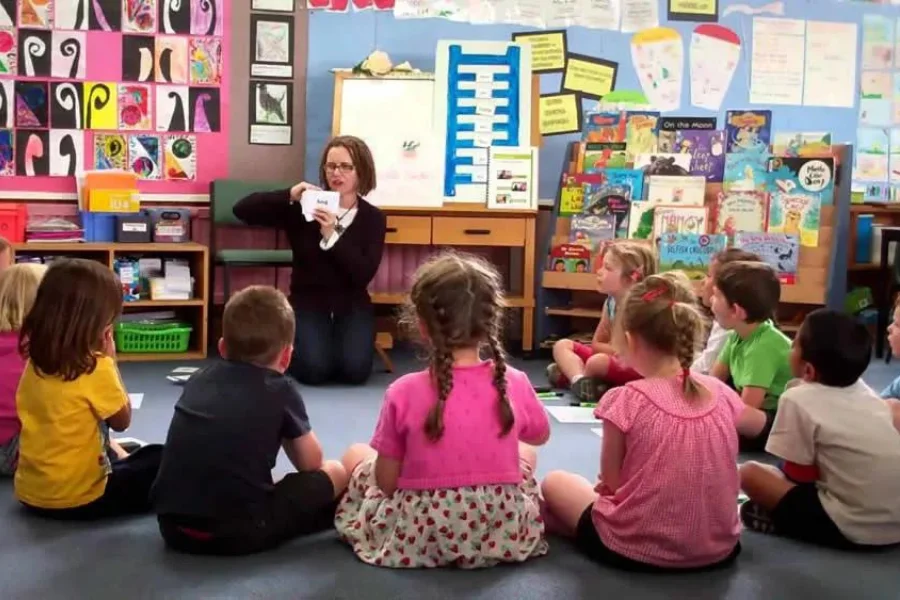Whole Language Approach vs Phonics
Source:ytimg
Whole Language Approach vs Phonics
The discussion between the Whole Language Approach vs Phonics is an old one in the field of education, flashing discussions among teachers, parents, and researchers about the most actual way to teach reading. At the heart of this debate is a simple yet profound question: Should we focus on words as whole parts or divide them into their phonetic components?
The Whole Language Approach vs Phonics debate includes a varied range of teaching philosophies and methodologies, each with its advantages and disadvantages. As we discover the above concept, we goal to shed light on the key features, profits, and possible limitations of each method, hoping to give clarity for teachers and parents making important decisions about their children’s literacy education.
Table of Content

Source: istockphoto
Foundational Philosophy
- Whole Language Approach considers engaging students in a rich verbal atmosphere, where reading is taught within the setting of literature, highlighting the meaning and the joy of reading.
- Phonics, on the other hand, its Foundational Philosophy involves systematic teaching of the sounds of letters and letter groups, and how these sounds merge to form words.
Teaching Strategy
- The Whole Language Approach uses literature, real-world texts, and writing to teach reading, giving words as whole units.
- Teaching Strategy of Phonics includes reading by breaking down words into their smallest components (phonemes) and mixing them.
Focus on Grammar and Spelling
- In the Whole Language Approach, Focus on Grammar and Spelling is through exposure and use within writing and reading contexts, not in isolation.
- Phonics often integrates specific lessons on spelling patterns and rules as part of the reading procedure.
Role of Decoding
- The Role of Decoding in the Whole Language Approach is negligible, directing more on sight respect and setting clues.
- Phonics places a strong stress on decoding abilities, teaching children to sound out words.
Approach to Errors
- When a child makes a reading error, the Whole Language Approach to Errors involves looking at the context or pictures to guess the word.
- Phonics would escort the child to sound out the word again, directing on phonetic clues.
For additional details on the Phonics Course, Dial or WhatsApp at +919869866277 / +919869546913.
To download the Phonics Course brochure, Check Here!

Source: landmarkschool
Instructional Materials
- The Whole Language Approach uses complete literary texts, environmental print, and student-generated content.
- Instructional Materials employed by Phonics include decidable texts that emphasize a particular phonetic pattern, alongside flashcards and worksheets.
Assessment Methods
- Assessment Methods in the Whole Language Approach are more complete, including observations, writing samples, and project-based assessments.
- Phonics Assessment Methods tend to be more structured and directed on phonemic awareness, decoding skills, and the ability to apply phonetic rules.
Teacher’s Role
- In the Whole Language Approach, teachers act as guides, enabling discussions and encouraging search of texts.
- In Phonics, the Teacher’s Role is more ruling, with a clear focus on teaching specific phonetic concepts and rules.
Learning Environment
- The Whole Language Learning Environment includes classrooms filled with books, student writings, and various texts to encourage a love of reading and writing.
- Phonics Learning Environment may feature more targeted learning aids like letter and sound charts, and manipulatives for building words.
Success with Different Types of Learners
- The Whole Language Approach may resonate more with students who are holistic learners, benefiting from context and visual cues.
- Success with Different Types of Learners through Phonics can be particularly effective for analytical learners, who benefit from understanding the structure and rules of language.
The choice between the Whole Language Approach vs Phonics is not about selecting a winner but understanding and applying the strengths of each to meet the diverse needs of learners. Integrating elements from both approaches, educators can create a balanced literacy program that nurtures skilled, confident, and joyful readers.
For additional details on the Phonics Course, Call or WhatsApp +919869866277 / +919869546913.
To download the Phonics Course brochure, Check Here!
Phonics Teacher Training Course
In the ongoing dialogue on literacy education methods, particularly in the Whole Language Approach vs Phonics debate, the significance of specialized training for educators becomes ever more apparent. Within this context, the Course offered by Vidhyanidhi Education Society (Govt. regd.) stands out as a beacon for educators aiming to refine their teaching methodologies in phonics, specifically aligning with the popular UK-based Synthetic Phonics Teaching and Learning Approach. This course promises a robust foundation in phonics through a meticulously designed 18-hour intensive training program, tailored to equip teachers with both the theoretical knowledge and practical skills needed to excel in phonics instruction.

Source: scholastic
The key elements of the Phonics Course at Vidhyanidhi:
18 Hours of Extensive Training
This comprehensive Phonics Teacher Training Course engrosses participants in understanding the Whole Language Approach vs Phonics and phonics teaching practices, ensuring they master the basics and advanced aspects of phonics education.
Synthetic Phonics Teaching Approach
Adhering to this popular UK-based approach, Vidhyanidhi’s Phonics Training Course emphasizes the importance of teaching letter sounds before blending them jointly to form whole words, a direct contrast to the Whole Language Approach which centers on word identification as a whole.
Audio-Visual Learning Aids
The use of multimedia resources enhances the learning of the Whole Language Approach vs Phonics, making abstract phonetic concepts more accessible and engaging through visual and auditory means.
Understanding Phonics Sounds with Rhymes, Tales, and Actions
To foster a profound understanding and retention of the 42 sounds, the Phonics Course uses rhymes, tales, and actions, thus making the learning process entertaining and effective.
Thorough Training of all the 42 Sounds
Participants get comprehensive practice with all 42 Phonics sounds, ensuring they are well-prepared to teach these basic elements of phonics to their students.
Mock-drills
These simulated teaching sessions permit future phonics educators to employ their learning in a controlled situation, boosting their morale and teaching prowess.
Doubt-Solving and Question-Answer Sessions
The Phonics Teacher Training Course at Vidhyanidhi includes reserved sessions for participants to clear up any uncertainties and engage in in-depth discussions, nurturing a thorough understanding of the Synthetic Phonics Methodology.
In a landscape where the Whole Language Approach vs Phonics discussion continues to evolve, the Phonics Teacher Course by Vidhyanidhi Education Society, a Govt. acknowledged institute, offers a targeted, comprehensive solution for educators seeking to specialize in phonics. This Course not only prepares educators to navigate the complexities of phonics instruction but also prepares them to make informed decisions in the broader the discussion, ultimately benefiting their students’ literacy growth.
Unlock reading success with Vidhyanidhi’s Phonics course on Phonics vs Whole Language!
For additional details on the Phonics Course, Call or WhatsApp +919869866277 / +919869546913.
To download the Phonics Course brochure, Check Here!
Whole Language Approach vs Phonics
FAQs
Which Approach is Better Phonics or Whole Language?
Neither approach is universally better; the choice depends on the learner's needs, and combining both can be effective.
What is Whole Language Approach Example?
Whole Language example: Learning ‘bat’ by associating it with an image of a bat and the word itself.
Which Approach to Teaching Phonics is Best?
Synthetic phonics, teaching sounds and then linking them into words, is widely recommended for its efficacy.





